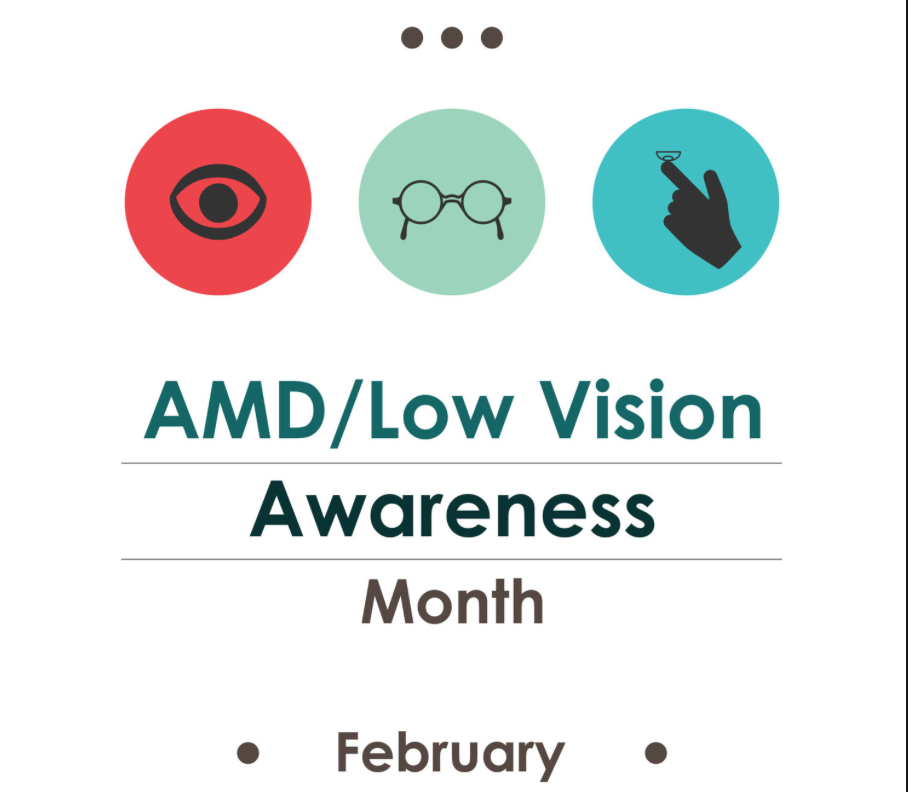February is national age-related macular degeneration (AMD) and low vision awareness month. Low vision is a visual impairment that cannot be corrected by standard eyeglasses, contact lenses, medication, or surgery. AMD, a deterioration, or breakdown of the macula is one of the most common causes of poor vision after age 60. The macula is a small area at the center of the retina in the back of the eye that allows us to see fine details clearly and perform activities such as reading and driving. According to the National Eye Institute, 11 million people in the United States have AMD.
How AMD Affects Vision
The visual symptoms of AMD involve loss of central vision. While peripheral (side) vision is unaffected, one loses the sharp, straight-ahead vision necessary for driving, reading, recognizing faces, and looking at detail.
Risk Factors for AMD
Age is the most significant risk factor for developing AMD. Heredity, blue eyes, high blood pressure, cardiovascular disease, and smoking have also been identified as risk factors. AMD accounts for 90% of new cases of legal blindness in the United States.
Types of AMD
- Dry AMD is the most common form. It is characterized by accumulation of yellow deposits called drusen, thinning of the macula, and gradual deterioration of central vision.
- Geographic atrophy (GA) is a late stage of dry AMD and involves chronic and irreversible progressive destruction (atrophy) of central retinal cells and underlying blood vessels due to chronic inflammation.
- Wet AMD is less common but more serious. With this form of the disease, abnormal blood vessels grow under the retina and may leak, causing accumulation of blood or other fluid that can cause scarring of the macula.
AMD Treatments
Intravitreal injections of medications that block a molecule called VEGF (vascular endothelial growth factor) are the standard treatment for wet AMD and help to reduce the number of abnormal blood vessels in the retina. These anti-VEGF medications include Avastin, Lucentis, and Eylea. Texas Retina’s Dr. Kothari explains what to expect from an eye injection in this video.
For many years, there was no way to treat the dry form of AMD other than vitamin supplements. However, in February 2023, the FDA approved the first-ever treatment for GA secondary to AMD — Syfovre. They approved a second drug — Izervay — in August 2023. Both are intravitreal injections.
Several other potential treatments are in development. Texas Retina’s Dr. McClellan explains GA and some of the current and emerging treatment options for it in this video.
High intensity reading lamps, magnifiers, and other low vision aids can also help people with AMD make the most of their remaining vision.
AMD Clinical Trials
Texas Retina is currently involved in several clinical trials to explore new AMD treatment options. If you are interested in participating in a trial, please inform your retina specialist during your next visit.


